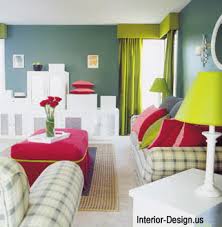
Nature of work
An interior designer makes interior spaces functional, safe, and beautiful for almost every type of building like offices, homes, airport terminals, shopping malls, and restaurants. He/she selects and specifies colors, finishes, fabrics, furniture, flooring and wall coverings, lighting, and other materials to create useful and stylish interiors for buildings. He/she determines the client’s goals and requirements of the project, considers how the space will be used and how people will move through the space, and sketches preliminary design plans. Also, he/ she specifies materials and furnishings, such as lighting, furniture, wall coverings, flooring, equipment, and artwork, prepares final plans using computer applications, and creates a timeline for the interior design project and estimates project costs. He/she oversees installing the design elements, makes visits after the project to ensure that the client is satisfied and searches for new projects. He/she works closely with architects, structural engineers, and builders to determine how interior spaces will look and be furnished. He/she may read blueprints and must be aware of building codes and inspection regulations. Environment of work
Working hours typically include regular extra hours but not shifts. Evening and weekend work should be expected. Since the designer's role is often integral to a larger construction and development process, flexibility with working hours is an accepted norm. Most interior and spatial designers work in studios. Self-employed designers often work from home or from a rented studio. Part-time work is possible. Self-employment and freelance work are common. On-site work requires appropriate dress, which may include a hard hat. Working to completion dates and budgets may be stressful. Travel within a working day is frequent and absence from home overnight is sometimes required. Many designers visit exhibitions and trade fairs to keep up to date with the latest trends. There are opportunities to work abroad with some of the larger design consultancies. Professional life
Print all pages in this sectionCase studies
·Interior designer: Pam
TThere is no definite or structured career path, and the extent and speed of career progression depends on the setting and his/her performance, aptitude and dedication. A newly qualified junior designer tends to work alongside with more experienced colleagues. He/she is typically given responsibility for parts of a project and can also assist with gathering information and putting together 'mood' or 'sample' boards for presentations to clients. This can then lead to more responsibility, depending on his performance. A career move into more specialized areas such as lighting design or theatre set design which may be an option for those with relevant experience. Other areas of related work include visual merchandising and exhibition and museum design. Graduates with experience and further postgraduate qualifications can enter the teaching profession, teaching in secondary, further or higher education.
Range of typical starting salaries: 60000 SYP.
Getting the job
Entry to professional interior or spatial design usually requires a relevant bachelor’s degree. The following subjects are preferred: spatial design, interior design, interior architecture, and 3D design.Degrees in architecture, furniture design, product design, textile design, graphic design or fine art may also be useful. Pre-entry postgraduate qualifications are not needed, but specialized courses do exist and may enable him/her to move into interior/spatial design from another area of art and design. Taking a course in computer-aided design (CAD) or Photoshop may also be useful. Experience of voluntary or part-time work is usually necessary in order to find full-time work. Competition for work experience is strong, so it is important to be proactive when looking for opportunities. A bachelor’s degree is usually required, as are classes in interior design, drawing, and computer-aided design (CAD). A bachelor’s degree in any field is acceptable, and interior design programs are available at the associate’s, bachelor’s, and master’s degree levels.
Skills
There are many skills he/she needs to have and tries to improve, such as:Artistic ability. He/she uses his/her sense of style to develop designs that look great and are aesthetically pleasing.
Creativity. He/she needs to be imaginative in selecting furnishings and fabrics and in creating spaces that serve the client’s needs and fit the client’s lifestyle.
Detail oriented. He/she needs to be precise in measuring interior spaces and making drawings so that furniture and furnishings will fit correctly and create the appropriate environment.
Interpersonal skills. He/she need to be able to communicate effectively with clients and others.
Problem-solving skills. He/she must address challenges such as construction delays or the high cost or sudden unavailability of selected materials while keeping the project on time and within budget.
Visualization. He/she needs a strong sense of proportion and visual awareness to understand how pieces of a design will fit together to create the intended interior environment.
Sources and references
If you need any further information on what is included in this file, you can visit the following websites:- www.interiordesign.net, Interior Design Magazine
- www.asid.org, American Society of Interior Designers
- The Order of Syrian engineers, Damascus, Tel: 6627256
- www.arab-eng.org, Arab Engineers Forum.
- Arab Standard Classification of Occupations, 2008, Ed. Arab Labor Organization.
